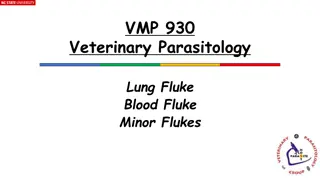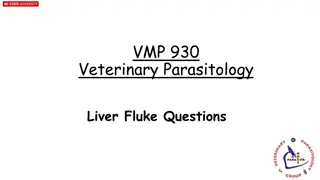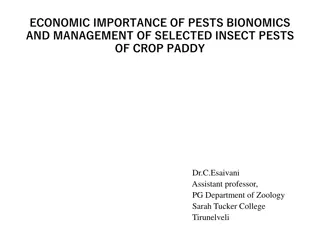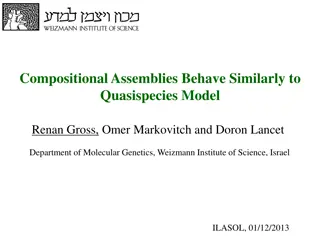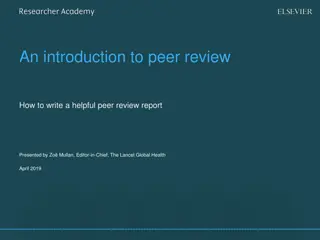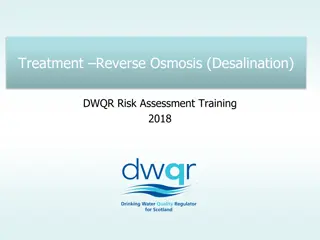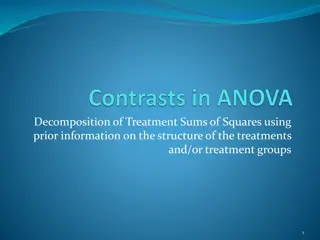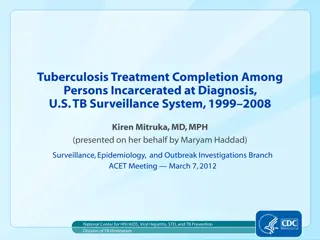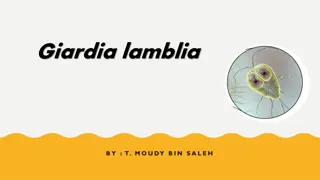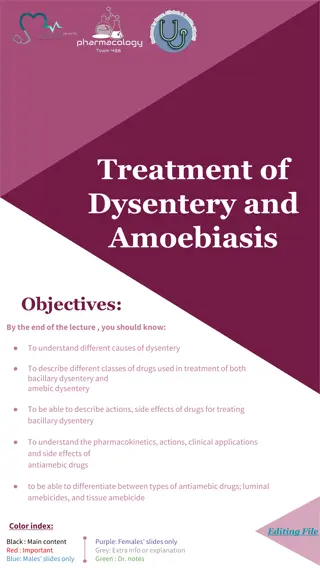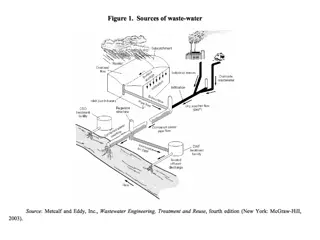Lifecycle and Treatment of Dicrocoelium Dendriticum - A Lancet Fluke
Plagiorchiformes is an order with diverse adult species, notably Dicrocoelium dendriticum causing Dicrocolidiasis. Its complex lifecycle involves snails, ants, and multiple hosts. The parasite can infect various animals and rarely humans. The treatment options for controlling D. dendriticum infestations include medications like Hexachloroethane, Hetholein, and Thiabendazole.
Uploaded on Sep 23, 2024 | 0 Views
Download Presentation

Please find below an Image/Link to download the presentation.
The content on the website is provided AS IS for your information and personal use only. It may not be sold, licensed, or shared on other websites without obtaining consent from the author. Download presentation by click this link. If you encounter any issues during the download, it is possible that the publisher has removed the file from their server.
E N D
Presentation Transcript
Order: Plagiorchiformes Adults are quite diverse in this order, and many do not resemble one another. Larvae and juveniles share more similarities than adults. Wall of excretory bladder epithelial. Cercaria with simple tail and dorsal finfold. Oral stylet usually present (xiphidiocercariae). Most species have small eggs and most (but not all) have eggs that must be eaten by snail to hatch and tend to be medium-small worms; most intestinal. Below are some representative species: Dicrocoelium dendriticum (family: Dicrocoeliidae)
Phylum: Platyhelminthes Class: Trematodes Subclass: Digenea Order: Plagiorchiforms Family: Dicrocoeliidae Genus: Dicrocoelium Species: D. dendraticum The disease called Dicrocolidiasis. Intermediate host: First: land snails, Second: Ants Final host: Cattle Site of infection: portal and hepatic vessels
Synonyms include Dicrocolium lancelatum and Distoma dendraticum. Medium sized, elongate, and flattened worms ("lancet fluke") (ca 6-10 x 1.5-2.5 mm), body pointed at both ends, and cecae simple; ovary post-testicular. Common in Europe and Asia; introduced into Australia and North America. Life-cycle Adults in bile ducts, gall bladder, and pancreatic ducts of sheep, cattle, goats, pigs, cervids, lagomorphs, some rodents, and rarely humans, eggs passed embryonated out with feces, eaten by land snails, and about 55 different species of snails have been shown to be suitable hosts then hatch into two sporocyst generations after that xiphidiocercaria accumulate in pulmonary chamber of snail, cercaria aggregate as masses and secrete thin cyst wall. Snail then coats cercaria with mucus, and deposits slime balls containing numerous cercaria (dozens to hundreds) in slime trails, this slime balls eaten by ants.
About 17 species and several genera of ants have been found to be suitable second intermediate hosts (in USA, Formica fusca); ants love to eat slime balls and even feed them to the larval ants. Most metacercaria encyst in hemocoel and are infective to final host; however, 1-2 encyst in depression between roots of subesophageal nerves leading to mouthparts (never become infective), as temperature decreases in the evening, ants climb up grass and clamp down with mandibles. Uninfected ants return to colony. Paralyzed ants found only at temperatures under 20 C0, mandibles release when ants warm up the next morning, so, ruminants graze in evenings and mornings, ingesting these exposed ants, metacercaria excyst in duodenum, migrates up common bile duct and development to adult.
Treatment: 1- Hexachloroethan and Fouadein, which cutoff ova production from adult worms. 2- Hetholein (19-22)mg/Kg. body weight 3- Thibendazol (200-300) mg/kg body weight which can kill 96%from adult worms.
Order: Opisthorchiformes Typically: worms in medium to small size, testes usually posterior, cirrus absent and seminal receptacle present. Eggs passed fully embryonated, while, metacercariae encysted in fish. Clonorchis sinensis (syn. Opisthorchis sinensis) (family: Opisthorchiidae)
Phylum: Platyhelminthes Class: Trematodes Subclass: Digenea Order: Opisthorchiforms Family: Opisthorichidae Genus: Opisthorichis Species: O. sinenesis The disease is Opisthorchiosis Intermediate host: First: snails, Second: fishes Final host: Human Adults of the Chinese liver fluke live in bile ducts, are elongate, 8-20 x 1.5- 5 mm. Asiatic in distribution, infecting cats, humans, dogs, badgers, mink, etc. Large, dendritic testes posteriorly that are tandem
Life-cycle Adults in bile ducts, produce up to 4000 eggs per day; live about 6 months, eggs passed in feces fully embryonated, eaten by snails (most common, Parafossarulusmanchouricus) one sporocyst and one redial generation, cercaria with eyespots; when contacts solid object swims upward, attaches to fish epithelium; over 100 species of cyprinids suitable, enters through skin, encysts under scales or in muscle as metacercaria. Some crustacea will also support the metacercaria after that fish eaten, so, metacercaria excyst; migrate to common bile duct. Pathologically includes erosion of the biliary epithelium. There is also evidence to suggest that this parasite is probably carcinogenic to humans.
Opisthorchis felineus (syn. Opisthorchis tenuicollis) in Europe and Asia, and which also uses a variety of mammals as hosts especially felids, other carnivores, and humans. Evidence is not adequate to conclude that this parasite is a cause of cancer. Opisthorchis viverrini in southeast Asia infects up to 10 million humans. Evidence suggests that this parasite can induce cholangiocarcinoma in humans.


